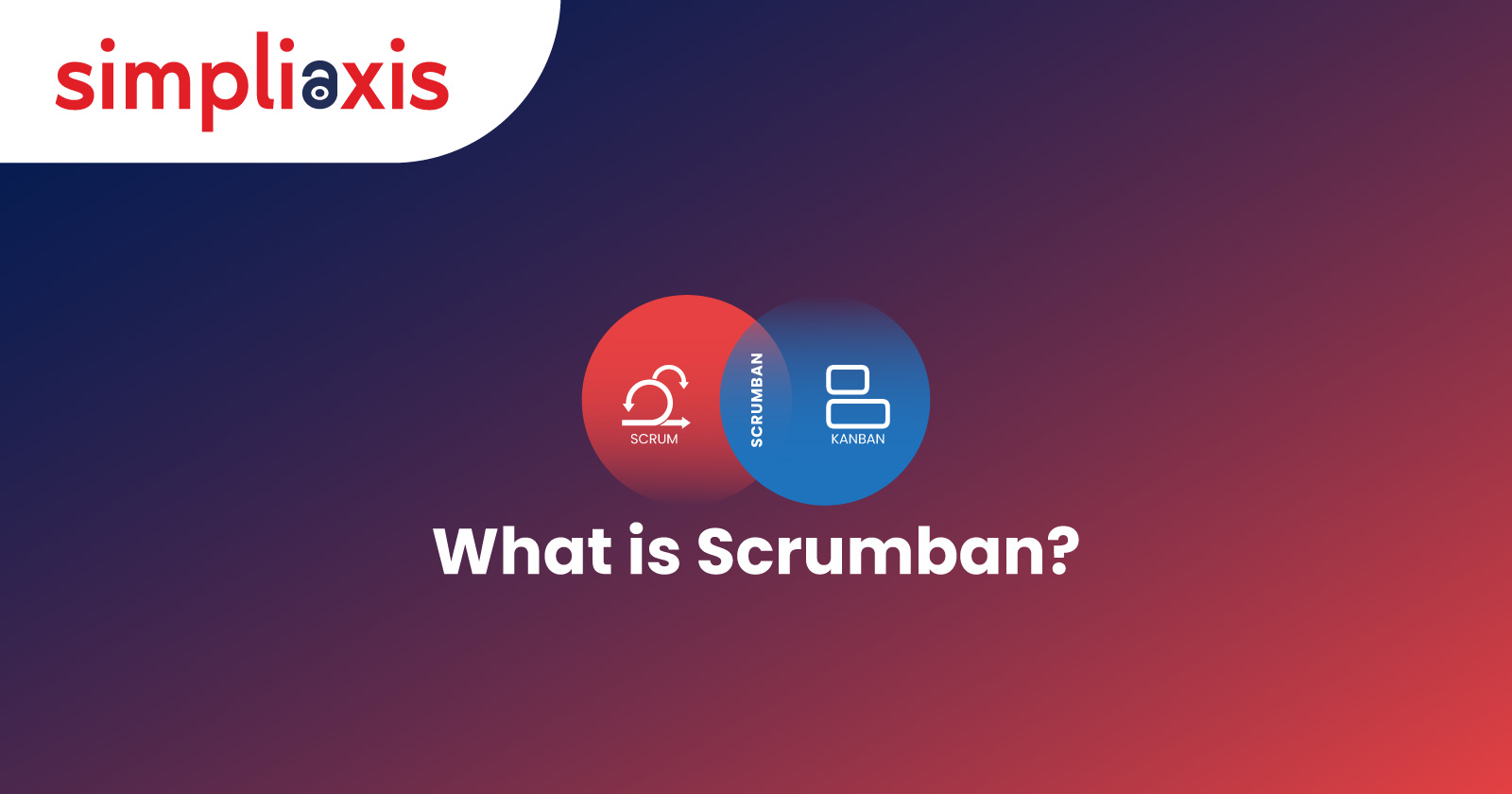Scrumban is the project management framework combining two essential features of popular agile methodologies, Scrum and Kanban. The Scrum project framework merges with the structure and predicts the scrum routine with Kanban's flexibility, making the team more agile, efficient, and productive.
The companies that implement the Scrumban where central approach involve helping the teams focus on correcting strategic tasks while at the same time improving their processes. It is a hybrid approach that provides flexibility, structure, and continuous improvement. It emphasizes visualizing the work, limiting the work in progress, and prioritizing the tasks depending on the business value and the customer's needs.
It uses sprints, retrospectives, and planning meetings that provide structure, flexibility, and adaptation to change. The Scrumban helps the team optimize their workflow and improve the company's overall efficiency.
Basics of Scrum
Scrum is an agile approach that is used in software development as the scrum team tends to organize itself into specific and different roles such as scrum master, product owner, and the rest of the scrum team.
The team breaks the workload into short time frames called sprints, each lasting two weeks or one month. During the sprint, the developers work on the tasks that the team initially agreed to during the sprint meeting. Before the next sprint, the team is focused on holding another sprint meeting and decides which items to work on next time. The scrum teams meet daily to discuss the tasks that must be completed that day.
Basics of Kanban
Kanban is a visual approach focused on managing the team's workload. By using the methodology, the team creates a Kanban board to visually showcase the workflow in different columns, such as ready to start, in progress, under review, and completed.
When developers tend to start working on an item, they start by moving a card with the item name written in the ready to start column to in progress status. If the items move backward from under review to in progress, the team tends to move the card back to the in-progress column.
The Kanban board is designed to make the task easy for everyone to view and update the status of the project in an effective manner.
Learn more about: Kanban Board vs Scrum Board
How Scrumban Combines Scrum and Kanban?
The Scrumban combines Scrum and Kanban, benefitting the strengths of both methodologies in the long run.
- It uses Scrum's sprint framework and allows the teams to customize the duration of their sprints accordingly.
- Scrumban focuses on continuous delivery and feedback, enabling the team to make real-time changes and continuously improve the process.
- Scrumban leverages Kanban's visual board and WIP limits, optimizing the workflow and monitoring work progress.
- The Scrumban approach promotes a collaborative and self-organizing team structure that empowers team members to take ownership and informed decisions.
- It focuses on prioritizing customer value by refining and prioritizing the product backlog.
- By incorporating fundamental principles, Scrum and Kanban combined to improve the team's efficiency, reduce waste, and deliver customer value.
- Scrum and Kanban offer a flexible approach in Scrumban that allows the team to customize their processes and adapt to changing circumstances.
How Does Scrumban Work-Step by Step Guide?
The Scrumban process begins with Scrum's sprint planning, daily standup, and retrospective meetings. Afterward, it quickly shifts to the continuous flow of work, which can be measured or tracked through Kanban's visual boards and WIP limits. The team tends to adapt to changing priorities and focuses on delivering value most quickly.
Step 1- Develop a Scrumban Board
To develop a Scrumban board, define the different workflow stages and create columns for each stage on the board. Start by adding task cards with descriptions, owners, and due dates, where you can add color code to signify the task's status, priority, and urgency.
Add a WIP label to ensure a smooth flow of work, allowing you to prioritize the task and move the high-priority task to the top of the "To-Do" column. Afterward, ensure the board is visible and accessible to all the team members; start by religiously reviewing and adapting the board to optimize the team's efficiency.
The Scrumban board can help the team effectively manage their work and improve productivity.
Step 2: Specify Work-in-Progress Limits
In every sprint, Scrum sets both the time and task limits, while Kanban ensures the continuous workflow, which means you must limit how much work the team can retain at any given time. For Scrumban, the limit will be the number of total cars on the board at any time. Start by setting a realistic limit to keep the team from being overwhelmed and frustrated.
Step 3: Order Team's Priorities on Board
Order the team's priorities on the Scrumban board, where you can create a backlog of tasks that need to be completed. Furthermore, prioritize the tasks based on their urgency and importance by color coding or labeling them, indicating each task's priority level.
Start by moving the highest priority task to the top of the To-Do column of the board. It involves encouraging the team to focus on completing the highest-priority tasks before picking the lower-priority ones. Reviewing and adjusting the tasks according to priority ensures the team constantly works on the most critical tasks.
Step 4- Throw out Planning Poker Cards
Each sprint has a strict time limit where the team can only work on the pre-defined set of projects during any sprint. The scrum team is required to estimate the duration of the development tasks where they have introduced devised methods such as planning poker to estimate the number of story points that indicate time and difficulty to complete each task. With Scrumban, workflow is continuous and not time-constraint, so the team won't estimate any story points.
Step 5: Setting up Daily Meetings
In the scrum framework, the typical meetings include sprint planning, sprint review meetings, and retrospectives meetings, which include short standups for the team to discuss their to-do list, plans, and challenges in the project.
These short meetings encourage team bonding and cohesion as developers spend much time working on the projects individually, eliminating the interaction. Hence, these daily meetings are fruitful for team bonding.
When to Consider Using Scrumban?
The Scrumban approach benefits the team under various conditions, such as
- Maintaining the ongoing projects
These projects include new product launches, which don't include a definite completion date.
- The team is facing trouble understanding the scrum framework.
Not understanding the scrum framework can happen for several reasons, such as the company not having adequate resources to support a scrum environment or the team finding scrum requirements too rigid to understand.
- The company offers more flexibility in its working operations.
With Scrum, the team assigns specific tasks to individuals best suited for each sprint. Scrumban comes with a broad list of projects, and the team tends to determine how they can effectively leverage the resources. It enhances teamwork and allows the individuals in the company to find projects that are best suited to their skills and interests.
Advantages of Scrumban Methodology
Scrumban methodology benefits the team, improving the software development process. Here are some of the significant benefits of using Scrumban, such as
- Flexibility
The Scrumban methodology offers the best of Scrum and Kanban, allowing the team to leverage the flexibility of Kanban and the structure of Scrum. It allows the teams to adapt quickly to changing requirements, which fits appropriately in changing requirements, and also provides a framework to plan and manage work in an effective manner.
- Improved Visibility
The Scrumban methodology visually represents the team's workflow, making it easier to identify the hurdles and locate the improvement areas.
- Continuous Improvement
The Scrumban methodology focuses on continuous improvement through regular retrospectives, allowing the teams to identify and address the issues when they occur.
- Enhanced Collaboration
The Scrumbag methodology encourages collaboration between team members and between teams and stakeholders, leading to better communication and alignment on project goals.
How to implement Scrumban?
The implementation of the Scrumban methodology requires working on a structured approach. Here are some ways that you can follow when implementing Scrumban
- Identifying the need for Scrumban
Before implementing the Scrumban, it is essential to identify whether it is required for the project. Scrumban is well-suited for projects that require flexibility and continuous improvement.
- Developing a Scrumban Board
Creating a Scrumban board reflects the workflow of the project. The board includes columns such as backlog, ready for development, development in progress, ready for testing, and more.
- Define WIP Limits
Set work-in-progress limits for each column on the Scrumban board. These limits prevent overloading the team with too many tasks at a time.
- Implement Pull System
Implementation of a pull system helps the team prioritize tasks based on their importance.
- Monitoring the Process
Continuously monitoring the Scrumban process leads to identifying bottlenecks and areas for improvement.
- Improving the Process
The analyzing the data collected during the monitoring process and making necessary improvements in the Scrumban process.
Conclusion
Scrumban focuses on combining Scrum and Kanban training, which provides flexibility and continuous improvement. It emphasizes the continuous delivery of high-quality products and can be used for software development and non-IT projects.
Scrumban encourages the collaboration between the team members, stakeholders, and customers. Scrumban is a flexible approach to project management that prioritizes continuous improvement and value delivery. It makes it an ideal framework for teams looking for agile training and methodologies. Simpliaxis is the best platform to pursue the Scrum and Kanban courses and excel professionally. The certification opens up many individual opportunities and lets you enhance your career. Industry experts design these courses with years of experience in agile methodologies.



















